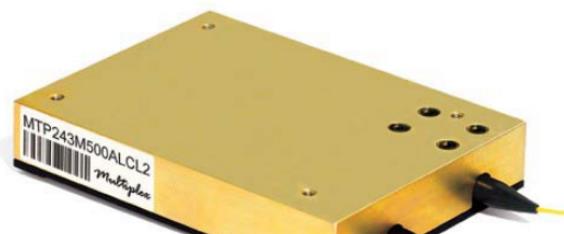What Is the Role of a Microwave Joint?
Essential Connectivity in Microwave Systems
A microwave joint, often referred to in technical terms as a waveguide rotary joint, plays a pivotal role in the function and integrity of microwave transmission systems. These specialized devices are crucial for facilitating the transfer of electromagnetic waves through sections of a system that require rotational or flexible movement.

Functionality of Microwave Joints
Enabling Rotation
One of the primary functions of a microwave joint is to allow continuous transmission of microwaves through a waveguide that needs to rotate or adjust positions. This is particularly important in radar systems, satellite dishes, and other communication equipment where the antenna or other components must rotate or pivot without interrupting the microwave signal.
Maintaining Signal Integrity
Microwave joints are meticulously designed to maintain signal integrity even as the waveguide undergoes movement. The ability to provide a low-loss transfer of high-frequency signals while accommodating mechanical motion is what makes these joints indispensable. They typically ensure that insertion loss— the loss of signal power resulting from the introduction of the joint into the waveguide — remains minimal, often less than 0.1 dB, which is crucial for maintaining the efficiency of the transmission system.
Types of Microwave Joints
Single Channel and Multi-Channel Joints
Microwave joints can be classified based on their functionality into single-channel and multi-channel types. Single-channel joints support one path of microwave transmission, suitable for simpler systems. In contrast, multi-channel joints can handle multiple simultaneous transmissions, which is essential for complex radar and communication systems that operate on different frequencies.
Rotary and Flexible Joints
Rotary joints are designed to provide rotational capabilities, essential for systems requiring full 360-degree movement. Flexible joints, on the other hand, offer bending flexibility, crucial for installing waveguides in tight spaces or configurations where alignment is challenging.
Critical Applications
Radar Systems
In radar systems, microwave joints allow the antenna to rotate freely, providing essential 360-degree coverage. This rotation capability is vital for tracking aircraft, ships, and weather patterns effectively.
Satellite Communications
For satellite communications, microwave joints enable the precise positioning and movement of satellite dishes. This ensures optimal alignment with satellites, critical for maintaining strong and stable communication links.
Advancements in Technology
Material and Design Innovations
Recent advancements in materials science and mechanical engineering have significantly improved the performance and reliability of microwave joints. The use of advanced materials like high-grade aluminum and ceramics has enhanced the durability and reduced the weight of these joints. Furthermore, precision engineering techniques have refined their design, allowing for smoother rotation and better alignment, which directly contributes to the overall performance of the microwave systems.
Conclusion
In summary, the microwave joint is a critical component in the realm of microwave engineering, providing the necessary functionality for systems that require mechanical flexibility along with high-frequency signal integrity. Its role is essential in ensuring that modern communication and radar systems operate seamlessly and efficiently. As technology progresses, the sophistication and importance of microwave joints are set to increase, highlighting their pivotal role in the advancement of communication technology.
